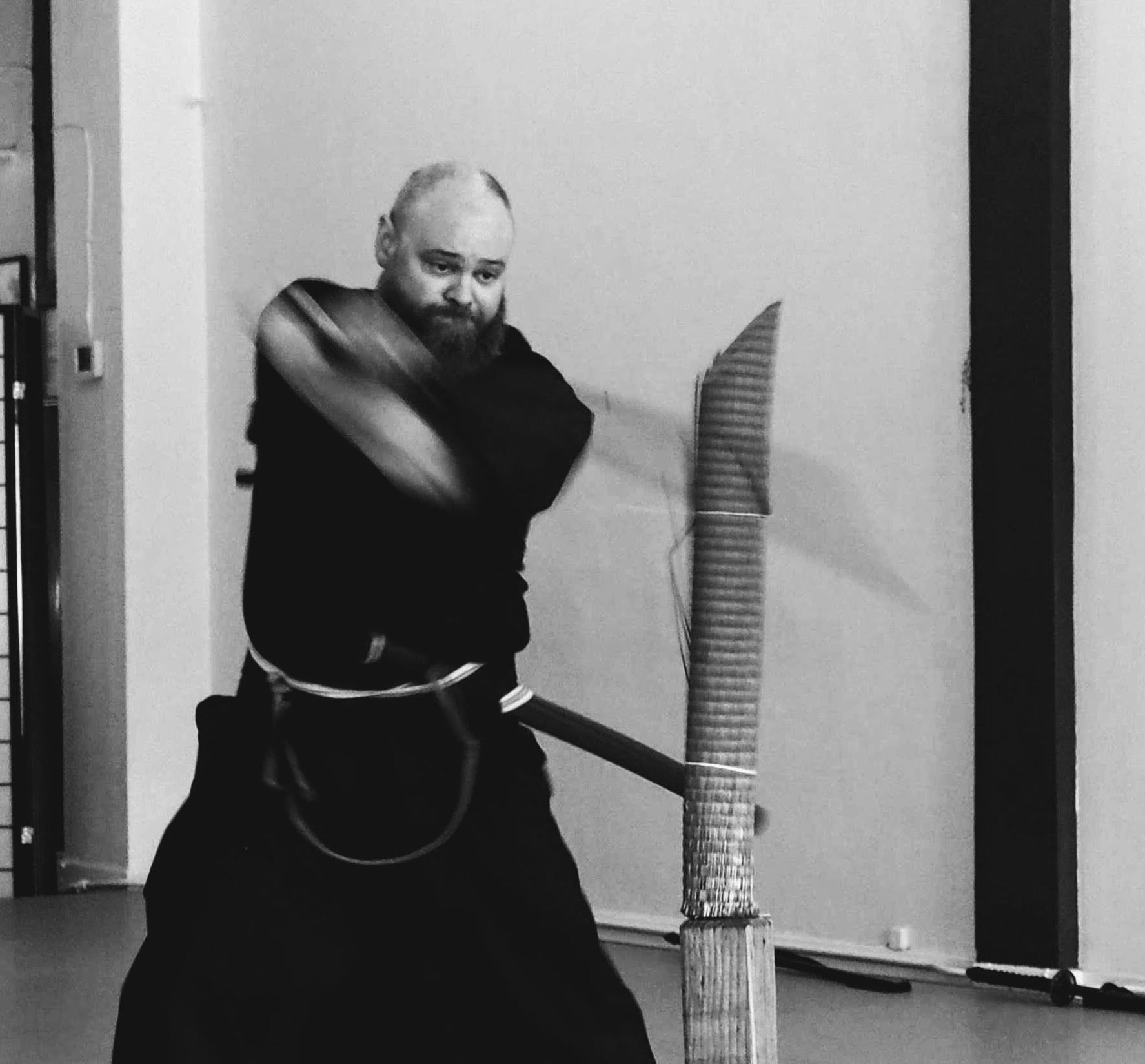
Over the last year my concept of “aiki” has evolved and clarified into a paradigm that I’m calling the “Three Shapes of Aiki.” Unlike Christopher Li’s excellent work translating and analyzing published works or speeches by notable Aikido and Daito Ryu instructors, this is my own synthesis of what I’ve been lucky enough to have been exposed to. While I don’t claim that any of this is 100% unique to me, I haven’t heard anyone else connect and combine these concepts in the same way.
The Three Shapes are the triangle, the square, and the circle. These shapes each represent an aspect of aiki and aikibudo. They can be studied and improved individually, but it’s my belief that aiki is what happens when you bring the three shapes together in the same person at the same time.
The Triangle represents what I call “The Rule of Threes” of jujutsu: triangulation, using three distinct triangulation points during each throw, and the three phases of nagewaza (kuzushi-tsukuri-kake). The Rule of Threes is the basis for efficient jujutsu and aikijujutsu waza. You can have clean and powerful jujutsu technique if you only use the Rule of Threes. It’s my observation that coordinating the three phases of nagewaza with three unique triangulation vectors creates the best and most efficient throws. Many of the techniques in Aikido, from ikkyo to iriminage, seem purposely designed to teach this association and yet it seems almost completely overlooked in most mainstream Aikido. Some extremely popular international Aikido teachers don’t seem to have any grasp of this concept at all. I’ve found that those techniques that seem problematic generally violate this paradigm thus causing frustration and confusion. Making subtle changes in these techniques often results in much more efficient and effective techniques, not to mention laughter. “Why didn’t anyone show me this before?!?!”
The Square represents body structure and connection. The specifics of this connection can vary depending on the training paradigm but the goal is a highly connected body of recruited tissue that has been trained to move in a coordinated manner. My primary influences here are Dan Harden’s Sangenkai material and to a lesser extent Akuzawa Minouru’s Aunkai system. I’ve also met people with Tai Chi and Yoga backgrounds that have skills in this area. Personally I find that the MOVEMENT mechanics of Dan Harden’s paradigm are the best fit for my waza (both open hand and weapons work). My group uses a combination of exercises to develop connection, recruitment, and stability.
The Circle represents tangential motion and is often referred to as “sideways” in the Sangenkai. If you visualize a ball, any vector of force acting on that ball can be adjusted to become tangential to the surface of the ball. Movement in this tangential (or nearly tangential) direction becomes very efficient and hard for your opponent to respond to while simultaneously thwarting their ability to move you efficiently. This is different from “center to center contact” or “going around the attack.” The Circle is in many ways the simplest of the three shapes, but it’s almost impossible to use EFFECTIVELY in budo without the Triangle and the Square.
Aiki waza (technique) is what happens when someone uses tangential forces (The Circle) with a recruited body (The Square) to accomplish the three phases of nagewaza using three points of triangulation (The Triangle). In my experience very few schools actively and effectively teach all three shapes which can lead to frustration and confusion. It’s my hope that by making this paradigm explicit, my group, Japanese Fighting Arts Northwest, will offer our members some of the best and most complete aiki based training available.
